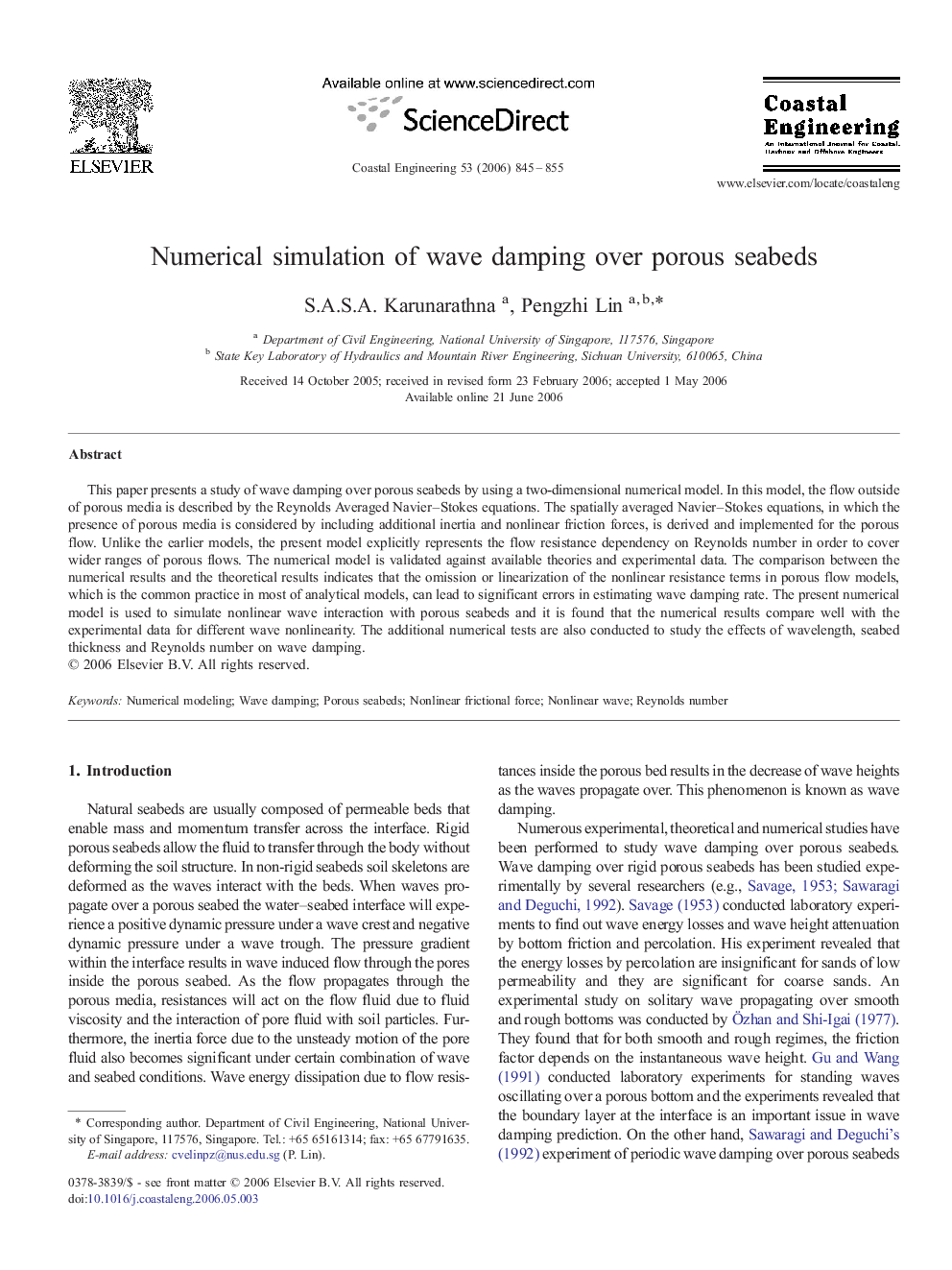| Article ID | Journal | Published Year | Pages | File Type |
|---|---|---|---|---|
| 1721677 | Coastal Engineering | 2006 | 11 Pages |
This paper presents a study of wave damping over porous seabeds by using a two-dimensional numerical model. In this model, the flow outside of porous media is described by the Reynolds Averaged Navier–Stokes equations. The spatially averaged Navier–Stokes equations, in which the presence of porous media is considered by including additional inertia and nonlinear friction forces, is derived and implemented for the porous flow. Unlike the earlier models, the present model explicitly represents the flow resistance dependency on Reynolds number in order to cover wider ranges of porous flows. The numerical model is validated against available theories and experimental data. The comparison between the numerical results and the theoretical results indicates that the omission or linearization of the nonlinear resistance terms in porous flow models, which is the common practice in most of analytical models, can lead to significant errors in estimating wave damping rate. The present numerical model is used to simulate nonlinear wave interaction with porous seabeds and it is found that the numerical results compare well with the experimental data for different wave nonlinearity. The additional numerical tests are also conducted to study the effects of wavelength, seabed thickness and Reynolds number on wave damping.
